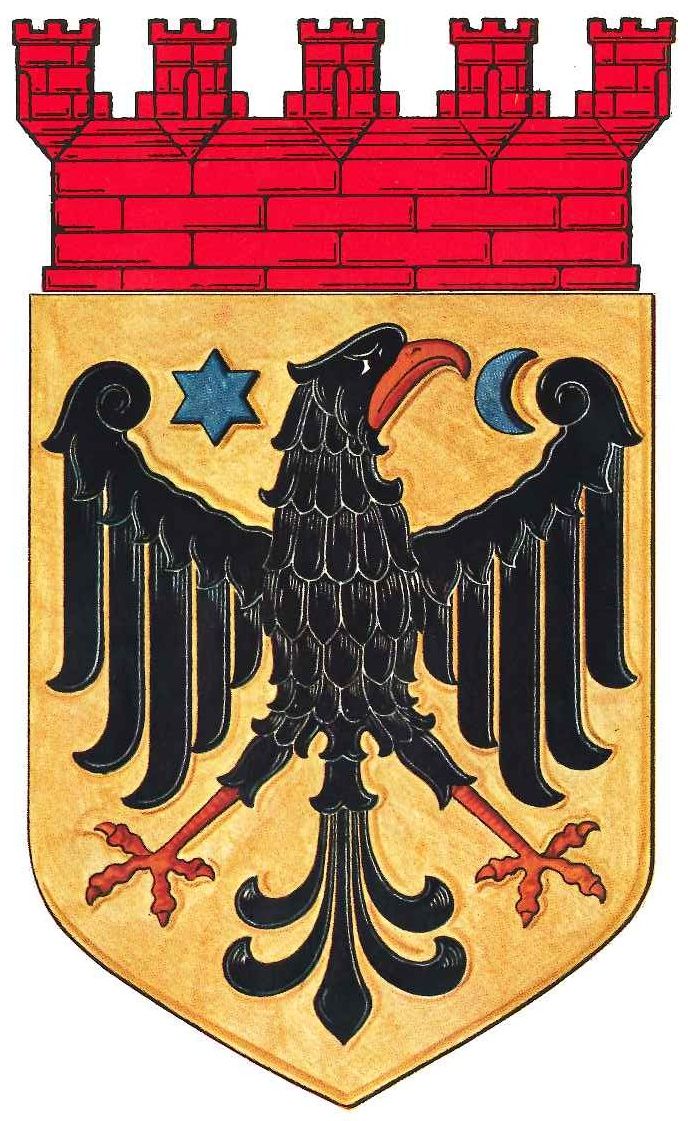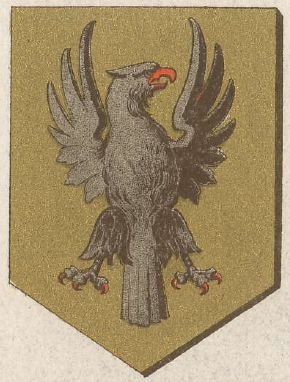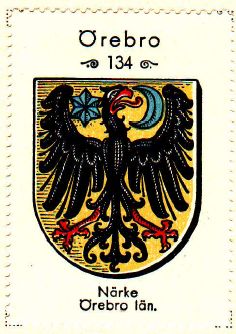Örebro
Template:Sweden ÖREBRO
Province (Landskap): Västmanland, Närke
County (Län): Örebro län
Additions : 1967 Mosjö (1952 Täby); 1971 Asker (1952 Lännäs), Axberg (1952 Ervalla, Hovsta, Kil), Ekeby och Gällersta (partly, 1952 Ekeby, Gällersta), Lekeberg (1952 Edsberg, Hackvad, Hidinge, Knista, Kräcklinge), Stora Mellösa (1952 Norrbyås), Tysslinge (1952 Gräve, Vintrosa); 1974 Glanshammar (partly, 1952 Götlunda, Lillkyrka, Rinkaby, Ödeby)
In 1995 Lekeberg was split off
Official blason
I fält av guld en till vänster seende svart örn med näbb och fötter röda, åtföljd till höger om huvudet av en sexuddig stjärna och till vänster om detta av en avtagande måne, båda blå.
Origin/meaning
The arms were officially granted in 1915.
Örebro received city rights in the 13th century and the oldest known seal of the city dates from 1331. The seal already showed an heraldic eagle. It is not known why an eagle was chosen as a symbol for the city. The crescent and star were used on other medieval seals of the city. The symbols probably have a religious origin. When the arms were granted in 1915 the symbols were combined with the eagle and the blue colour was chosen arbitrarily.
| The arms as shown by Liljeblad, 1878 |
The arms in the Kaffe Hag album +/- 1935 |
Contact and Support
Partners:
Your logo here ?
Contact us
© since 1995, Heraldry of the World, Ralf Hartemink 
Index of the site
Literature : Nevéus and de Waern, 1992












